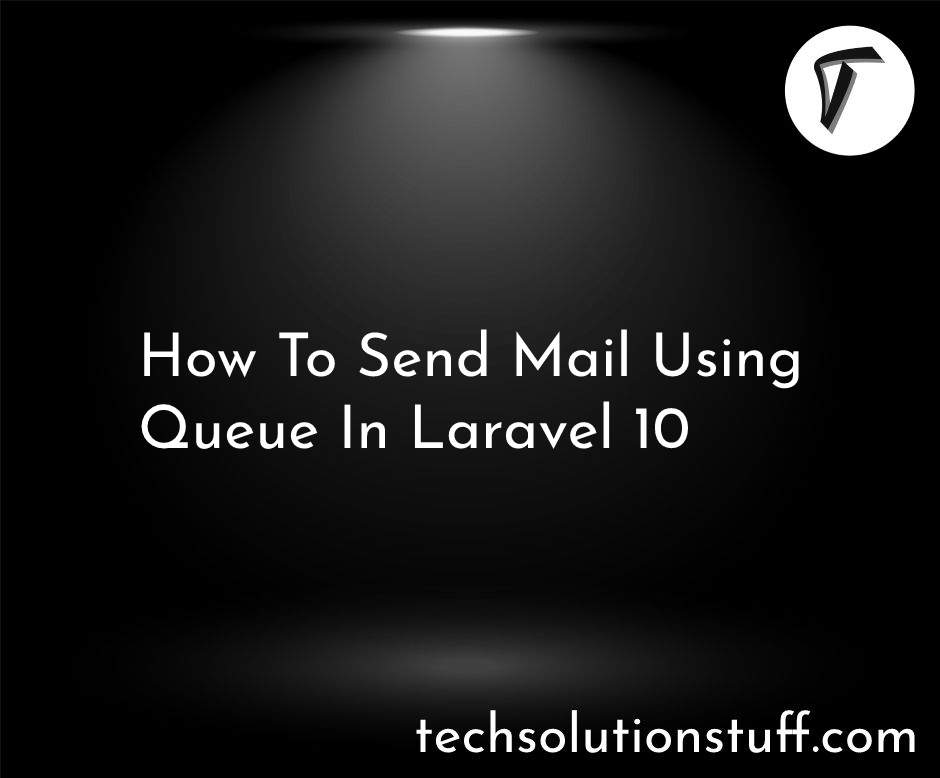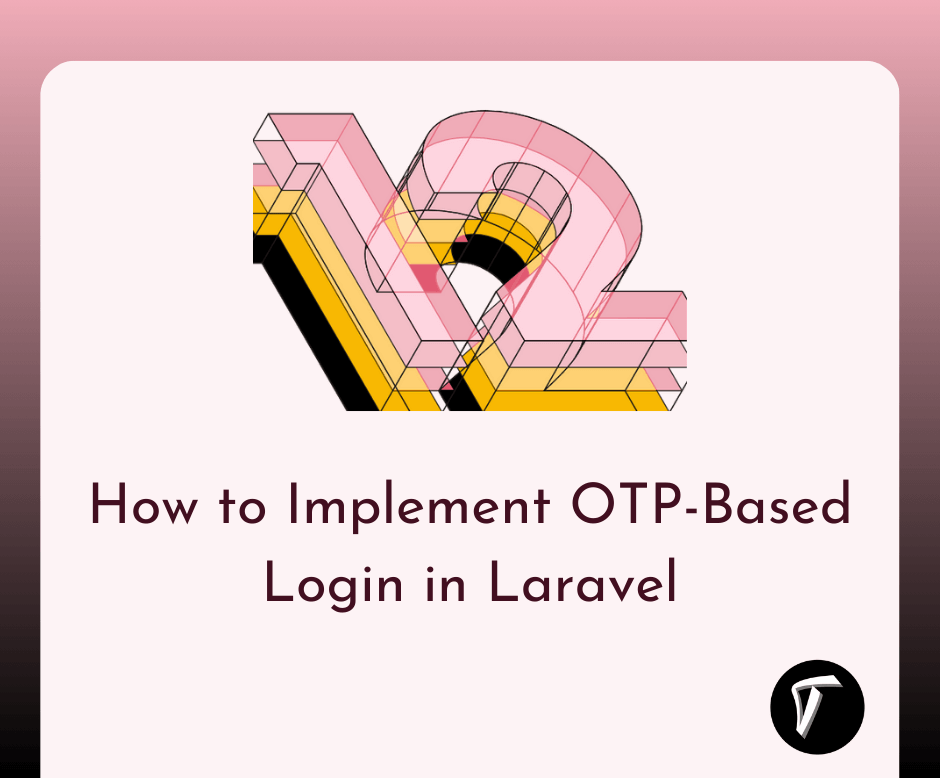How to Create Multiple Authentication in Laravel 11
Hello developers, In this guide we'll see how to create multiple authentications in laravel 11. Here, we'll learn about how to create multiple authentications with the help of middleware in laravel 11. Middleware provides a convenient mechanism for inspecting and filtering HTTP requests entering your application.
Laravel includes a middleware that verifies whether the user of your application is authenticated. If the user is not authenticated, the middleware will redirect them to your application's login screen.
We will add three types of users:
1. User
2. Manager
3. Super Admin
Laravel 11 Multiple Authentication using Middleware

In this step, we'll install the laravel 11 application using the following composer command.
composer create-project laravel/laravel laravel-11-multi-auth
Now, we will configure a database in the .env file.
DB_CONNECTION=mysql
DB_HOST=127.0.0.1
DB_PORT=3306
DB_DATABASE=laravel_11_multi_auth
DB_USERNAME=root
DB_PASSWORD=
Then, we will add the "type" column in the user's table and model.
database/migrations/create_users_table.php
<?php
use Illuminate\Database\Migrations\Migration;
use Illuminate\Database\Schema\Blueprint;
use Illuminate\Support\Facades\Schema;
return new class extends Migration
{
/**
* Run the migrations.
*
* @return void
*/
public function up()
{
Schema::create('users', function (Blueprint $table) {
$table->id();
$table->string('name');
$table->string('email')->unique();
$table->timestamp('email_verified_at')->nullable();
$table->string('password');
$table->tinyInteger('type')->default(0); /* Users: 0=>User, 1=>Super Admin, 2=>Manager */
$table->rememberToken();
$table->timestamps();
});
}
/**
* Reverse the migrations.
*
* @return void
*/
public function down()
{
Schema::dropIfExists('users');
}
};
Now, run the migration using the below command.
php artisan migrate
After that, we will update the User model.
app/Models/User.php
<?php
namespace App\Models;
use Illuminate\Contracts\Auth\MustVerifyEmail;
use Illuminate\Database\Eloquent\Factories\HasFactory;
use Illuminate\Foundation\Auth\User as Authenticatable;
use Illuminate\Notifications\Notifiable;
use Laravel\Sanctum\HasApiTokens;
use Illuminate\Database\Eloquent\Casts\Attribute;
class User extends Authenticatable
{
use HasApiTokens, HasFactory, Notifiable;
protected $fillable = [
'name',
'email',
'password',
'type'
];
protected $hidden = [
'password',
'remember_token',
];
protected $casts = [
'email_verified_at' => 'datetime',
];
protected function type(): Attribute
{
return new Attribute(
get: fn ($value) => ["user", "super-admin", "manager"][$value],
);
}
}
In this step, we will create authentication using the scaffold to create a login, register, and dashboard.
Laravel UI Package:
composer require laravel/ui
Create Auth:
php artisan ui bootstrap --auth
npm install & npm run dev
Now, we will create AuthUser middleware that will restrict users from accessing other pages.
php artisan make:middleware AuthUser
app/Http/middleware/AuthUser.php
<?php
namespace App\Http\Middleware;
use Closure;
use Illuminate\Http\Request;
use Symfony\Component\HttpFoundation\Response;
class AuthUser
{
/**
* Handle an incoming request.
*
* @param \Closure(\Illuminate\Http\Request): (\Symfony\Component\HttpFoundation\Response) $next
*/
public function handle(Request $request, Closure $next, $userType): Response
{
if(auth()->user()->type == $userType){
return $next($request);
}
return response()->json(['You do not have permission to access for this page.']);
}
}
In this step, we will register AuthUser middleware in the app.php file, as illustrated in the code snippet below:
bootstrap/app.php
<?php
use Illuminate\Foundation\Application;
use Illuminate\Foundation\Configuration\Exceptions;
use Illuminate\Foundation\Configuration\Middleware;
return Application::configure(basePath: dirname(__DIR__))
->withRouting(
web: __DIR__.'/../routes/web.php',
commands: __DIR__.'/../routes/console.php',
health: '/up',
)
->withMiddleware(function (Middleware $middleware) {
$middleware->alias([
'authUser' => \App\Http\Middleware\AuthUser::class,
]);
})
->withExceptions(function (Exceptions $exceptions) {
//
})->create();
Then, we'll create a route with middleware and user types like manager and super-admin.
routes/web.php
<?php
use Illuminate\Support\Facades\Route;
use App\Http\Controllers\HomeController;
/*
|--------------------------------------------------------------------------
| Web Routes
|--------------------------------------------------------------------------
|
| Here is where you can register web routes for your application. These
| routes are loaded by the RouteServiceProvider within a group which
| contains the "web" middleware group. Now create something great!
|
*/
Route::get('/', function () {
return view('welcome');
});
Auth::routes();
// Users Routes
Route::middleware(['auth', 'authUser:user'])->group(function () {
Route::get('/dashboard', [HomeController::class, 'index'])->name('dashboard');
});
// Manager Routes
Route::middleware(['auth', 'authUser:manager'])->group(function () {
Route::get('/manager/dashboard', [HomeController::class, 'managerDashboard'])->name('manager.dashboard');
});
// Super Admin Routes
Route::middleware(['auth', 'authUser:super-admin'])->group(function () {
Route::get('/admin/dashboard', [HomeController::class, 'adminDashboard'])->name('admin.dashboard');
});
Now, we will add methods in the HomeController.php file.
app/Http/Controllers/HomeController.php
<?php
namespace App\Http\Controllers;
use Illuminate\Http\Request;
class HomeController extends Controller
{
public function __construct()
{
$this->middleware('auth');
}
public function index()
{
return view('home');
}
public function managerDashboard()
{
return view('manager_dashboard');
}
public function adminDashboard()
{
return view('super_admin_dashboard');
}
}
In this step, we will create a blade file for the manager and super-admin.
resources/views/home.blade.php
@extends('layouts.app')
@section('content')
<div class="container">
<div class="row justify-content-center">
<div class="col-md-8">
<div class="card">
<div class="card-header">{{ __('Dashboard') }}</div>
<div class="card-body">
@if (session('status'))
<div class="alert alert-success" role="alert">
{{ session('status') }}
</div>
@endif
You are login as a user role.
</div>
</div>
</div>
</div>
</div>
@endsection
resources/views/manager_dashboard.blade.php
@extends('layouts.app')
@section('content')
<div class="container">
<div class="row justify-content-center">
<div class="col-md-8">
<div class="card">
<div class="card-header">{{ __('Dashboard') }}</div>
<div class="card-body">
You are login as a manager role.
</div>
</div>
</div>
</div>
</div>
@endsection
resources/views/super_admin_dashboard.blade.php
@extends('layouts.app')
@section('content')
<div class="container">
<div class="row justify-content-center">
<div class="col-md-8">
<div class="card">
<div class="card-header">{{ __('Dashboard') }}</div>
<div class="card-body">
You are login as a super admin role
</div>
</div>
</div>
</div>
</div>
@endsection
In this step, we will update the LoginController file so update the following code to that file.
app/Http/Controllers/Auth/LoginController.php
<?php
namespace App\Http\Controllers\Auth;
use App\Http\Controllers\Controller;
use App\Providers\RouteServiceProvider;
use Illuminate\Foundation\Auth\AuthenticatesUsers;
use Illuminate\Http\Request;
class LoginController extends Controller
{
use AuthenticatesUsers;
protected $redirectTo = RouteServiceProvider::HOME;
public function __construct()
{
$this->middleware('guest')->except('logout');
}
public function login(Request $request)
{
$input = $request->all();
$this->validate($request, [
'email' => 'required|email',
'password' => 'required',
]);
if(auth()->attempt(array('email' => $input['email'], 'password' => $input['password'])))
{
if (auth()->user()->type == 'super-admin') {
return redirect()->route('admin.dashboard');
}else if (auth()->user()->type == 'manager') {
return redirect()->route('manager.dashboard');
}else{
return redirect()->route('dashboard');
}
}else{
return redirect()->route('login')
->with('error','Email-Address And Password Are Wrong.');
}
}
}
Now, we will create a seeder for the super admin and user.
php artisan make:seeder CreateUsersSeeder
Database/Seeders/CreateUsersSeeder.php
<?php
namespace Database\Seeders;
use Illuminate\Database\Console\Seeds\WithoutModelEvents;
use Illuminate\Database\Seeder;
use App\Models\User;
class CreateUsersSeeder extends Seeder
{
public function run()
{
$users = [
[
'name'=>'User',
'email'=>'[email protected]',
'type'=>0,
'password'=> bcrypt('123456'),
],
[
'name'=>'Super Admin',
'email'=>'[email protected]',
'type'=>1,
'password'=> bcrypt('123456'),
],
[
'name'=>'Manager',
'email'=>'[email protected]',
'type'=> 2,
'password'=> bcrypt('123456'),
],
];
foreach ($users as $key => $user) {
User::create($user);
}
}
}
Now, run seeder using the below command:
php artisan db:seed --class=CreateUsersSeeder
After that, run the laravel 11 application using the following command.
php artisan serve
Now, open the browser add the given URL, and check the created role using the email and password.
http://localhost:8000/login
You might also like:
- Read Also: How to Create CRUD Operation in Laravel 11
- Read Also: Install Yajra Datatables Laravel 11 Example
- Read Also: How to Create Custom Middleware in Laravel 11
- Read Also: How to Customize Default Middleware in Laravel 11








